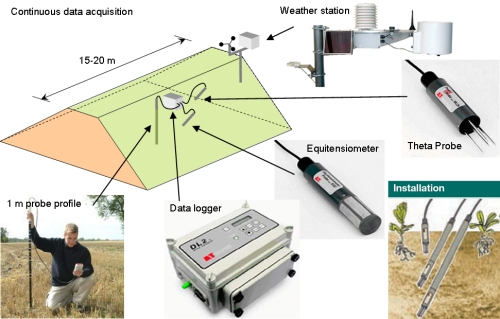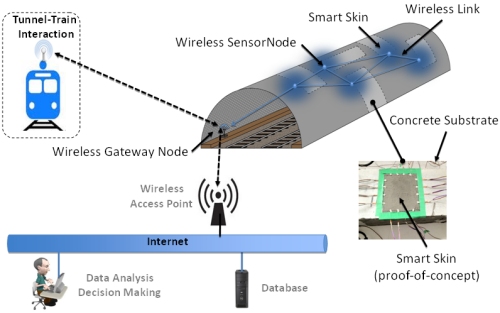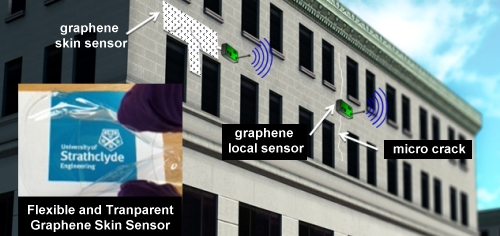Civil & Environmental Engineering
Real-time infrastructure monitoring
The objective of these research projects is to develop advanced and integrated monitoring technologies for built environment such as transport structures, buildings, wind turbines and earth structures.
We have a special emphasis on design and fabrication of wireless sensors and wireless networks for remote monitoring. The developed monitoring technologies are being evaluated using several test beds.
Insitu monitoring system

The Geotechnical monitoring system was designed according to the following methodology:
a) set up in a selected point of the embankment of a data logging station for a continuous acquisition of the monitored variable (frequency of acquisition 1 hour)
b) set up of two cross sections of the embankments for periodical measurements of the monitored variables along fixed vertical profiles
c) a weather station located close to the embankment.
The main idea was to study the response of the body of the embankment to the main environmental variables such as rainfall, temperature, sun and wind exposition, in terms of variation of the water content and suction.
The PR2 Profile Probes are portable devices capable of measuring the water content at six depths from the ground surface. Several access tubes have been drilled along the two monitored sections of the embankments (see figure). Both automatic continuous readings (in one access tube) by connecting it to the DL2E logger and periodical manual readings (in all the other access tubes) by means of H22, are available.
The ML2x Theta measures the water content in a fixed position within the soil. The Equitensiometer probe EQ2 (Figure) provides continuous readings of the matric suction within the soil in a fixed position by logging it to DL2E. Two temperature probes (Figure) have also been installed at different depths, in order to continuously measure the soil temperature, The DIVINER 2000 tubes in both the monitored sections of the embankment.
Integrity monitoring of underground transport systems

Cracking is the most common damage in tunnels. Cracks allow water to leak causing flooding or caving in. Concrete cracking can be caused by a number of variables including new construction interactions (pile driving nearby, neighbouring tunnel construction), excessive loading from earth and water pressures, creep and ageing.
Our research team is developing an innovative and low-cost monitoring system known as wireless “Smart Paint” for large structures such as tunnels and bridges. The Smart Paint is a durable and self-sensing nano-engineered material designed to wirelessly monitor large areas of a structure by early detection of cracks and providing indication on their size and shape.
Remote monitoring of bridge scour
Recent flood incidents across the globe, attributed to climate change, have caused hundreds of bridges to collapse without warning due to scour.
Scour is the result of the erosion of streambed around the foundation of structures, leading to structural instability and ultimately catastrophic failures.
To improve the safety and integrity of bridge transportation networks, wireless monitoring technique has been developed to detect scour and sediment deposition around bride piers and abutment and send early warning of scour-induced failure during flood conditions.
Damage detection in historical buildings

Aging of historical buildings require continuous monitoring to preserve their integrity and improve their longevity. Stress and aging induced cracking is the most common damage mechanism in these historical structures.
We’ve developed wireless thin skin-based crack sensor using Graphene technology to help owners monitor the condition of masonry structural supports. The sensor is a transparent and highly flexible material designed to be attached to existing structures without altering their traditional character and appearance.